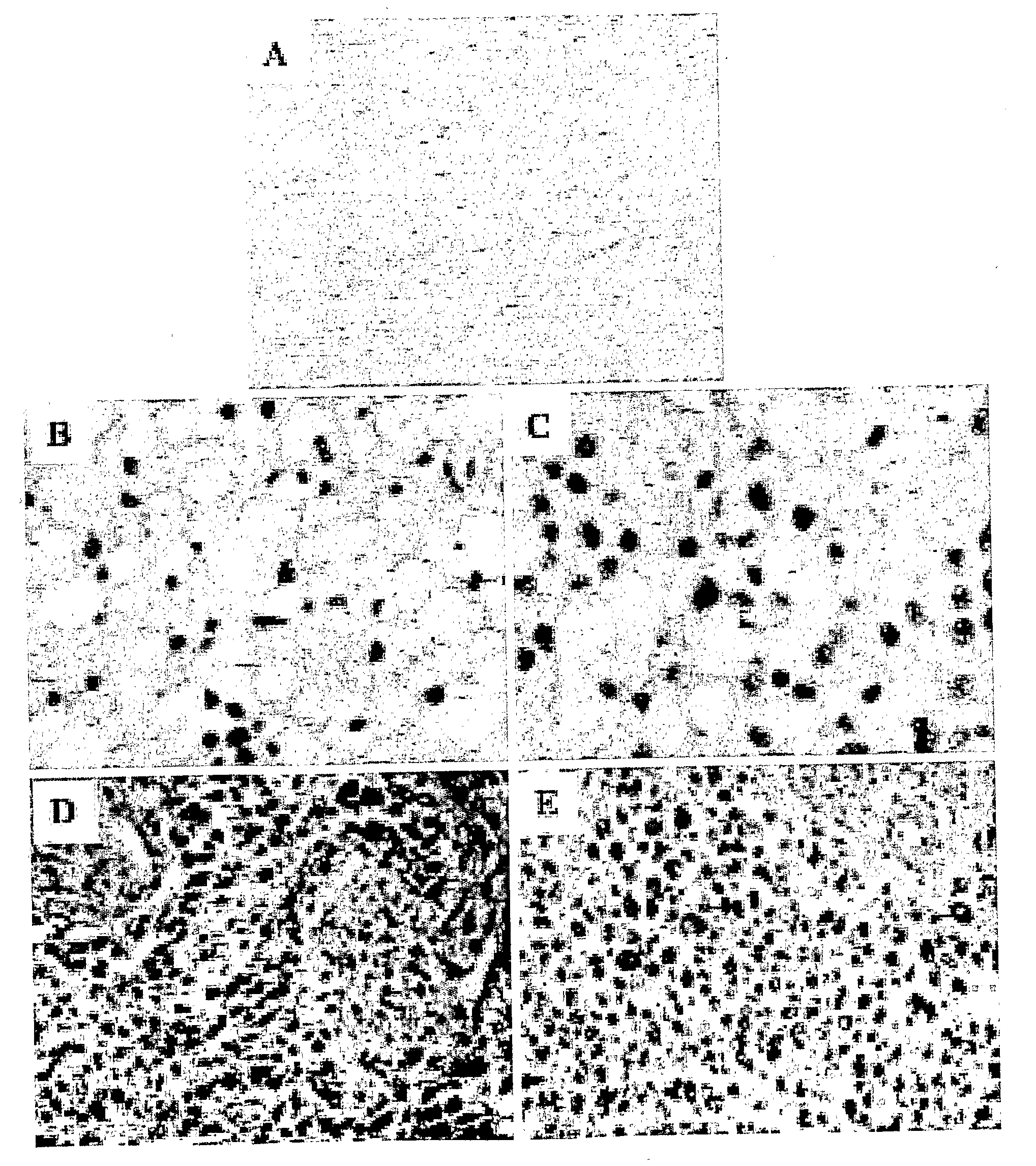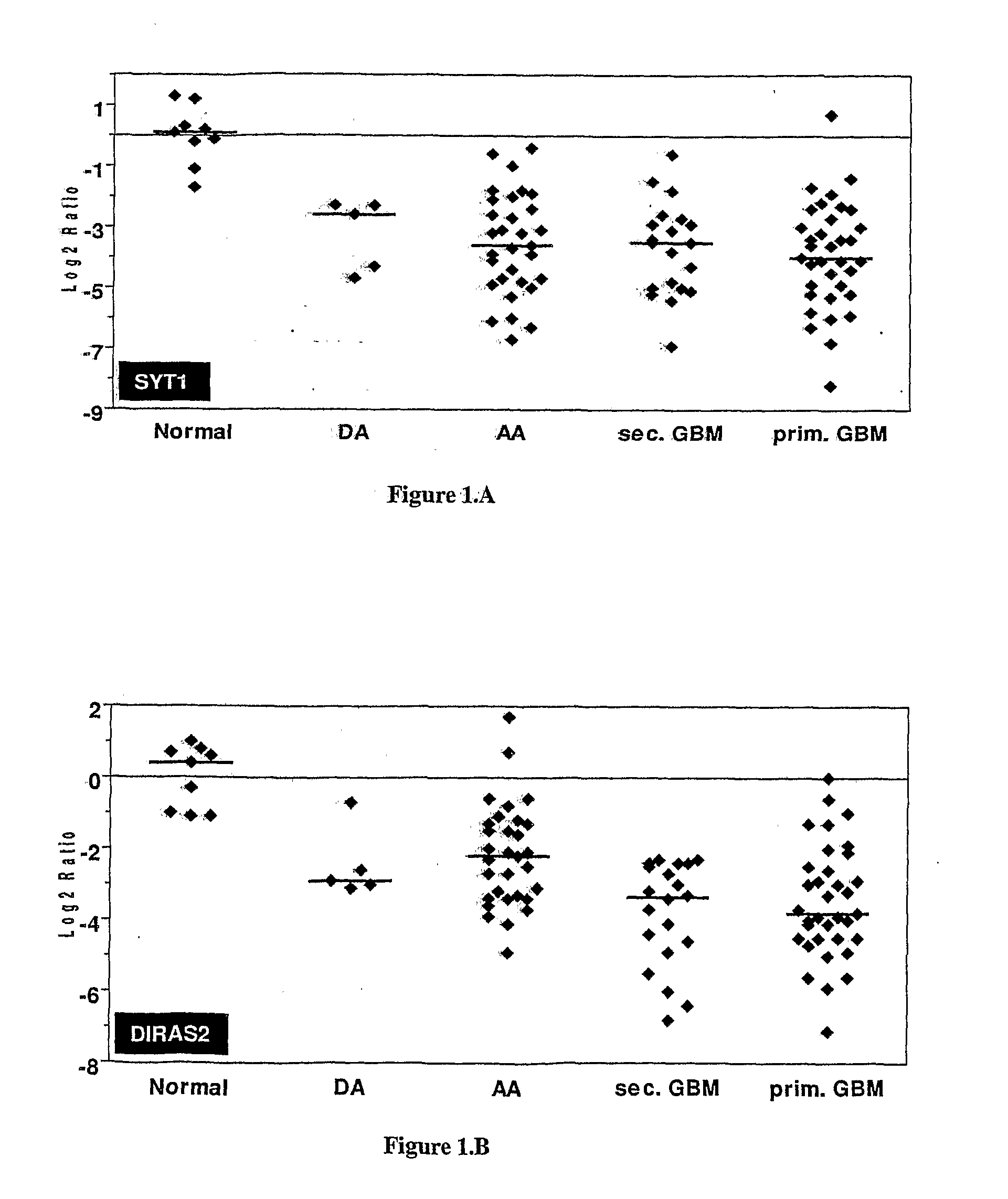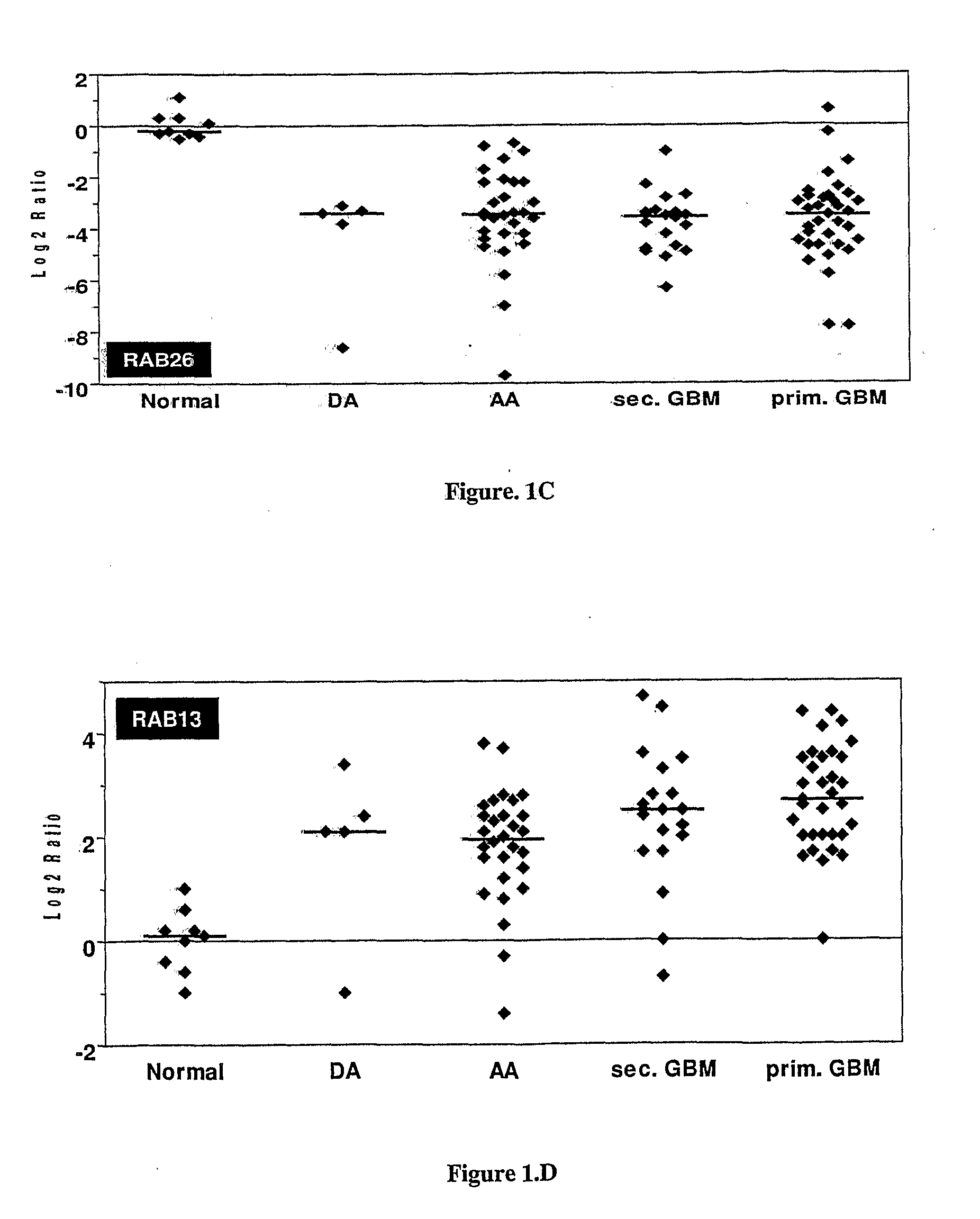Novel Primers for Identification of Astrocytoma, Its Grades and Glioblastoma Prognosis
a technology of astrocytoma and prognosis, applied in the field of new markers for identification of astrocytoma, its grades and glioblastoma prognosis, can solve the problems of insufficient use of differentiating markers, unable to change the natural history of incurable neoplasms, and chemotherapy, so as to improve the survival rate of human subjects, the effect of higher expression level
- Summary
- Abstract
- Description
- Claims
- Application Information
AI Technical Summary
Benefits of technology
Problems solved by technology
Method used
Image
Examples
example 1
[0177]Astrocytoma tissue samples were collected from patients, who underwent surgery at Sri Satya Sai Institute of Higher Medical Sciences and Manipal Hospital, Bangalore, India at the time of surgical resection. Controls comprised non-tumrous brain tissue samples (temporal lobe) collected from patients who underwent surgery for intractable epilepsy. A total of thirty-seven astrocytoma samples of different grades were used in this study. Tissues were bisected and one half was snap-frozen in liquid nitrogen and stored at −80° C. until RNA isolation. The other half was fixed in formalin and processed for paraffin sections and these were used to identify the histopathological grade and the type of astrocytoma.
example 2
RNA Isolation
[0178]Total RNA was extracted from the frozen tissue by a combination of the TRIzol method (Invitrogen, USA) and RNeasy Midi kit (Qiagen) according to the manufacturer's instructions. The RNA samples were quantified by measuring the absorbance using a spectrophotometer and visualized on a MOPS-Formaldehyde gel for quantity and quality assurance.
example 3
Quantitative RT-PCR
[0179]The relative quantitation of expression levels of selected genes was carried out using a two-step strategy: in the first step, cDNA was generated from RNA derived from different tissue samples using the High-capacity cDNA archive kit (ABI PRISM); subsequently real-time quantitative PCR was carried out with the cDNA as template using the following gene-specific primer sets and DyNAmo HS SYBR Green qPCR kit (Finnzymes, Finland): All the primers used were designed using the Primer Express software Version 2.0.0 from Applied Biosystems.
[0180]The list of primer pairs is given below.
Sl. No.GeneForward Primer (5′ to 3′)Reverse Primer (5′ to 3′) 1SYT1GGTTGGCTGTTTCCCAGTAAAACTTTTAAGAAGTACGGACCATCGG 2RAB26GTCTGCTGGTGCGATTCAAGGCATGGGTAACACTGCGGA 3DIRAS2CTGGTGTTGAGGTTTGTGAAAGGCCGTCGTGTCGGTGATCTG 4RAB13ATAACTACTGCCTACTACCGTGGCCATGTCACATTTGTTCCCCAG 5IGFBP7GGTCCTTCCATAGTGACGCCTCTGAATGGCCAGGTTGTCC 6COL6A1ACAGTGACGAGGTGGAGATCAGATAGCGCAGTCGGTGTAGG 7DCNAGTTGGAACGACTTTATCTGTCCGT...
PUM
| Property | Measurement | Unit |
|---|---|---|
| pH | aaaaa | aaaaa |
| width | aaaaa | aaaaa |
| nucleic acid | aaaaa | aaaaa |
Abstract
Description
Claims
Application Information
 Login to View More
Login to View More - R&D
- Intellectual Property
- Life Sciences
- Materials
- Tech Scout
- Unparalleled Data Quality
- Higher Quality Content
- 60% Fewer Hallucinations
Browse by: Latest US Patents, China's latest patents, Technical Efficacy Thesaurus, Application Domain, Technology Topic, Popular Technical Reports.
© 2025 PatSnap. All rights reserved.Legal|Privacy policy|Modern Slavery Act Transparency Statement|Sitemap|About US| Contact US: help@patsnap.com



